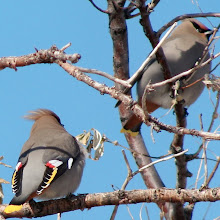Howdy folks,
After a long silence, and some rethinking of my priorities, I'm discontinuing the Taxon of the Day series.
I'm not that disciplined, and it's not very informative.
Although tune has changed, the song remains the same. This blog is intended as a forum for public documentation of the idiosyncratic path I weave in my explorations of the biological diversity of life on planet Earth. For the nonbiological diversity of life, see Diverse Affections.
enough melodrama. On to the...
NEWS!
I am going to Central America this summer! Hurrah!
Primarily to watch birds (Oh my goodness Oscar has already tallied 381 oh my goodness) as well as to look for mushrooms (obviously).
In preparation for said adventure, I have acquired the following items, for which I will provide pre- and post-trip reviews as a public service:
A Guide to the Birds of Costa Rica
(Stiles and Skutch)
The first seminal work in Costa Rican field ornithology (or so I'm told).
Pre-trip:
Initial positive impressions:
- Extensive accounts for each of the species including vocalizations, natural history, status, and
distribution.
- Each color plate hosts a relatively large number of species. This allows you to compare many
different species within one group with a minimum of page flipping. For example, the hummingbirds
are presented on a grand total of 3 pages.
Initial negative impressions:
- This book is LARGE.
- The color plates are not interspersed with the text (ie. they are clustered in the middle of the book).
- The illustrations are not labeled with the names of the birds, and matching the numbers to the very brief
field mark descriptions on the opposing page results in a lot of wasted time scanning. This is especially
true for plates with multiple tens of species (hummers, warblers, etc).
- The large number of illustrations per plate means that many renderings are kind of small...
- There are no consolidated raptors-in-flight plates!
- Out of date! Aside from common name changes and latin-name reassignments Many species have expanded their ranges since this was written. Although the authors hint at some of these changes, things have changed: Pearl Kites are apparently well established now, Southern Lapwings have appeared, Brown-Hooded parrots are moving north, etc.
The Birds of Costa Rica
(Garrigues and Dean)
Initial positive impressions:
- Smaller than it's counterpart, by a long shot.
- Only includes birds likely to be seen from land. Yes, this might fall into some people's negative column, but I
appreciate the reduction in size at the cost of completeness.
- Larger illustrations of each species, fewer per page, easy to match illustrations to names.
- Two words: RANGE MAPS.
- More up to date in nomenclature and individual species statuses.
- There is an incomplete but dedicated raptors-in-flight page.
- Key field marks are in BOLD in the text. Nice.
Initial negative impressions:
- Raptors in flight page is in the back of the book rather than with the raptors. Why???
- Very little natural history, and inconsistent reporting of vocalizations.
- Fewer species per page, although positive in the end, means that you have to do quite a bit of page flipping to
compare some species.
A Field Guide to the Plants of Costa Rica
(Gargiullo, Magnuson, Kimball)
Initial positive impressions:
- Well thought out organization: first by 'bauplan' ie. tree vs. shrub vs. vine, then by the color of the
conspicuous part.
- The authors appear to have put a good amount of thought into the species they included (ie. common, distinctive,
attractive). Includes both native and nonnative species.
- There is a short but appreciated overview of some plant ecology with specific eye to Costa Rica's habitats.
Initial negative impressions:
- Considering that the authors acknowledge the difficulty of providing readers with species identification, I wish
there was 20 pages dedicated with one or one half page each dedicated to the most common families and how to
recognize them.
- Some of the photos are piss-poor (small, lack detail, show nothing of diagnostic value).
- Field marks are not highlighted in the text.
Sunpak MiniPro Plus Ballhead Tripod
Alright, I had a hard time finding reviews of tripods online, so here ya go:
I bought this unit to complement my larger tripod (which doesn't get low enough to take nice photos of mushrooms and wildflowers).
As implied by the model name, this little ditty is real small when fully collapsed:
And it goes from a low elevation of just over 20 cm to nearly 35 cm tall when expanded.
The ball head moves smoothly and achieves almost all the angles at which I might care to position the camera.
It holds my Nikon D80 (1.75 pounds) pretty well, although at the most extreme angles (tilted all the way vertical or pointing directly down) it requires a little workaround in terms of positioning/extending the legs.
The rotating cuffs on the legs don't lock up when tightened, and the second joint (which snaps into place) holds firm when extended.
All in all, a good deal, especially for the traveler.
Subscribe to:
Post Comments (Atom)





No comments:
Post a Comment